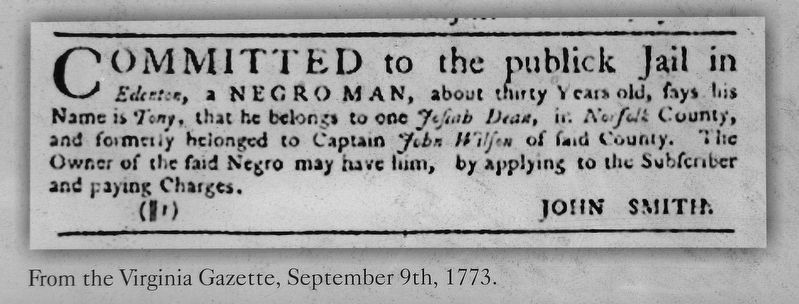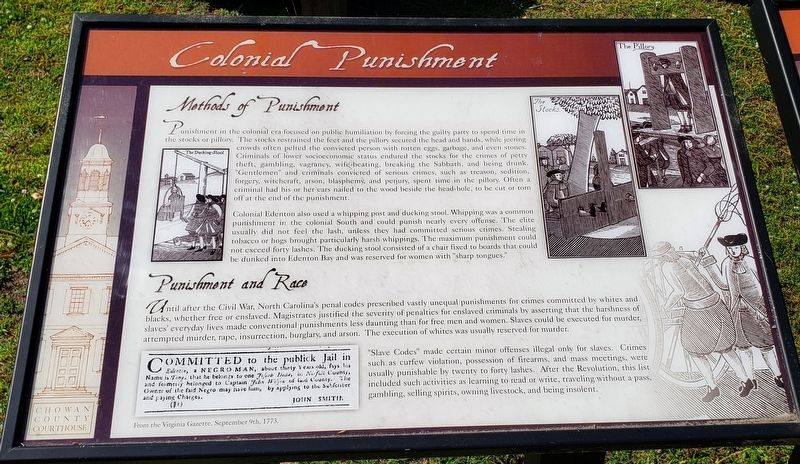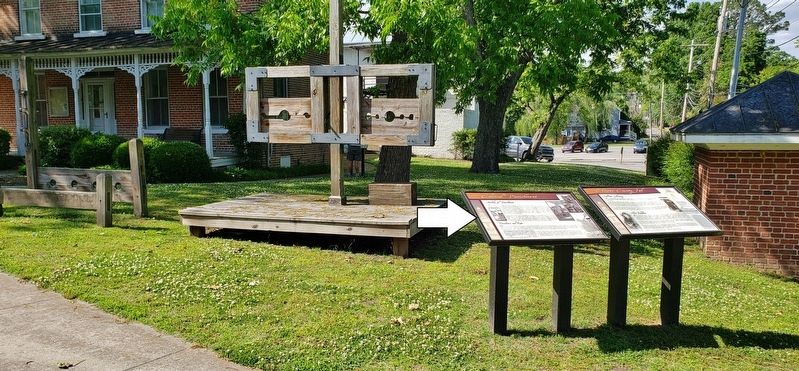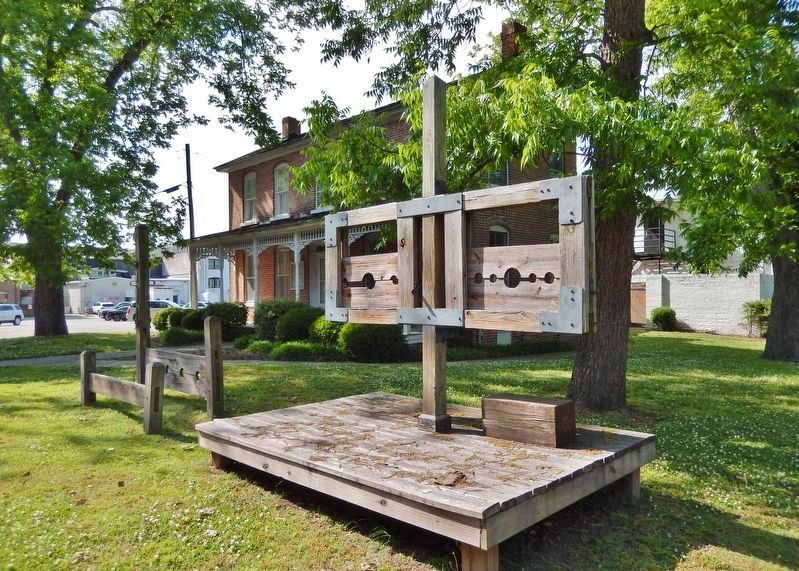Edenton in Chowan County, North Carolina — The American South (South Atlantic)
Colonial Punishment
Methods of Punishment
Punishment in the colonial era focused on public humiliation by forcing the guilty party to spend time in the stocks or pillory. The stocks restrained the feet and the pillory secured the head and hands, while jeering crowds often pelted the convicted person with rotten eggs, garbage, and even stones. Criminals of lower socioeconomic status endured the stocks for the crimes of petty theft, gambling, vagrancy, wife-beating, breaking the Sabbath, and being drunk. "Gentlemen" and criminals convicted of serious crimes, such as treason, sedition, forgery, witchcraft, arson, blasphemy, and perjury, spent time in the pillory. Often a criminal had his or her ears nailed to the wood beside the head-hole, to be cut or torn off at the end of the punishment.
Colonial Edenton also used a whipping post and ducking stool. Whipping was a common punishment in the colonial South and could punish nearly every offense. The elite usually did not feel the lash, unless they had committed serious crimes. Stealing tobacco or hogs brought particularly harsh whippings. The maximum punishment could not exceed forty lashes. The ducking stool consisted of a chair fixed to boards that could be dunked into Edenton Bay and was reserved for women with "sharp tongues."
Punishment and Race
Until after the Civil War, North Carolina's penal codes prescribed vastly unequal punishments for crimes committed by whites and blacks, whether free or enslaved. Magistrates justified the severity of penalties for enslaved criminals by asserting that the harshness of slaves' everyday lives made conventional punishments less daunting than for free men and women. Slaves could be executed for murder, attempted murder, rape, insurrection, burglary, and arson. The execution of whites was usually reserved for murder.
"Slave Codes" made certain minor offenses illegal only for slaves. Crimes such as curfew violation, possession of firearms, and mass meetings, were usually punishable by twenty to forty lashes. After the Revolution, this list included such activities as learning to read or write, traveling without a pass, gambling, selling spirits, owning livestock, and being insolent.
Topics. This historical marker is listed in these topic lists: African Americans • Colonial Era • Law Enforcement • Women.
Location. 36° 3.483′ N, 76° 36.465′ W. Marker is in Edenton, North Carolina, in Chowan County. Marker is on Court Street just north of East King Street, on the left when traveling north. Marker and exhibits are located on the north side of the Historic Chowan County Courthouse.

2. Marker detail: Virginia Gazette, September 9th, 1773
Committed to the public Jail in Edenton, a negro man, about thirty years old, says his name is Tony, that he belongs to one Jesiah Dean, in Norfolk County, and formerly belonged to Captain John Wilson of said County. The Owner of the said Negro may have him, by applying to the Subscriber and paying Charges.
—John Smith
—John Smith
Other nearby markers. At least 8 other markers are within walking distance of this marker. Chowan County Jail (here, next to this marker); 1825 Chowan County Jail (a few steps from this marker); 1767 Chowan County Courthouse (within shouting distance of this marker); Edenton Tea Pot (within shouting distance of this marker); Residence of Mrs. Elizabeth King (about 300 feet away, measured in a direct line); Joseph Hewes (about 500 feet away); a different marker also named Joseph Hewes (about 500 feet away); Josephine Napoleon Leary (about 500 feet away). Touch for a list and map of all markers in Edenton.
Also see . . .
1. Pillory.
The pillory is a device made of a wooden or metal framework erected on a post, with holes for securing the head and hands, formerly used for punishment by public humiliation and often further physical abuse. The pillory consisted of hinged wooden boards forming holes through which the head and/or various limbs were inserted; then the boards were locked together to secure the captive. Pillories were set up to hold people in marketplaces, crossroads, and other public places. They were often placed on platforms to increase public visibility of the person.
(Submitted on May 27, 2023, by Cosmos Mariner of Cape Canaveral, Florida.)
2. Stocks.
Stocks are feet restraining devices that were used as a form of corporal punishment and public humiliation. Victims may be insulted, kicked, tickled, spat on, or subjected to other inhumane acts. The stocks were employed by civil and military authorities from medieval to early modern times including Colonial America. Public punishment in the stocks was a common occurrence from around 1500 until at least 1748.(Submitted on May 27, 2023, by Cosmos Mariner of Cape Canaveral, Florida.)
3. Ducking stool.
Ducking stools were chairs formerly used for punishment of disorderly women, scolds, and dishonest tradesmen in England, Scotland, and elsewhere. They were instruments of public humiliation and censure both primarily for the offense of scolding or backbiting and less often for sexual offences like bearing an illegitimate child or prostitution. Most were simply chairs into which the offender could be tied and exposed at her door or the site of her offence. Some were put on poles so that they could be plunged into water, hence "ducking" stool.(Submitted on May 27, 2023, by Cosmos Mariner of Cape Canaveral, Florida.)
Credits. This page was last revised on May 27, 2023. It was originally submitted on May 27, 2023, by Cosmos Mariner of Cape Canaveral, Florida. This page has been viewed 211 times since then and 72 times this year. Photos: 1, 2, 3, 4, 5. submitted on May 27, 2023, by Cosmos Mariner of Cape Canaveral, Florida.



